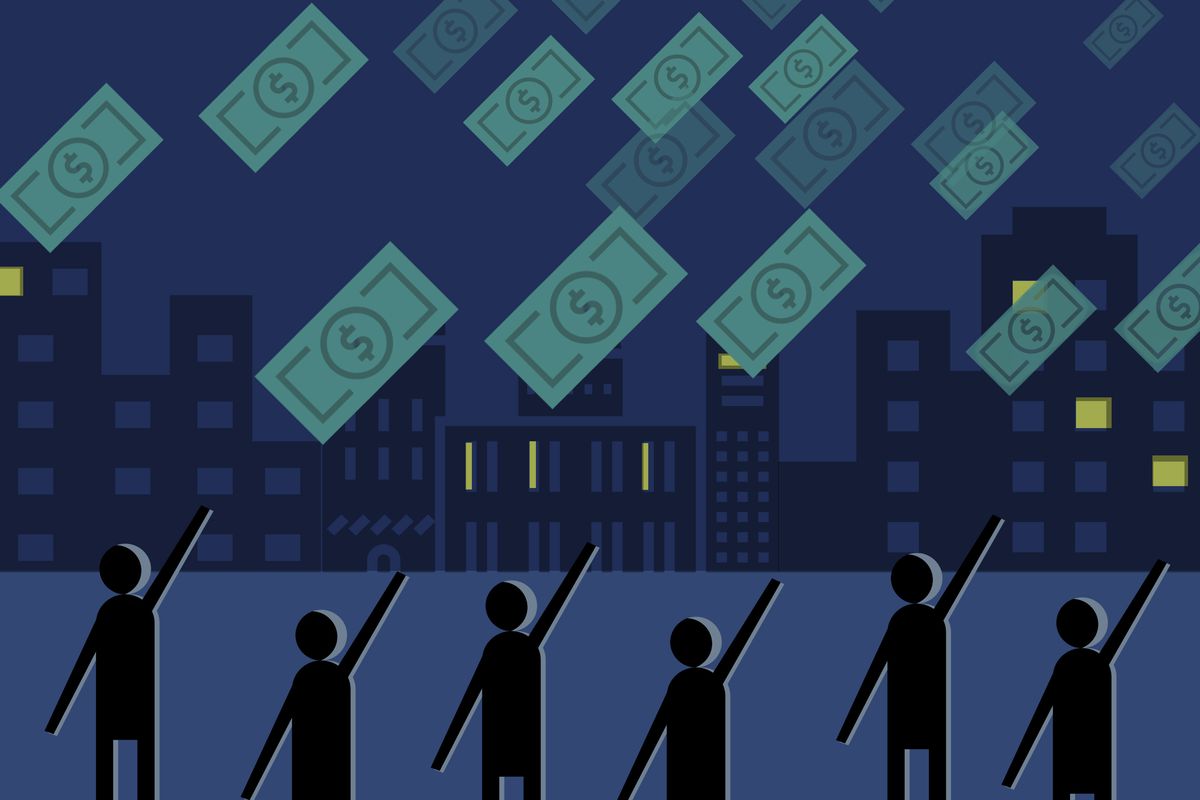RIO DE JANEIRO, BRAZIL – In the second year of the pandemic, 2021, the average income of Brazilians fell to its lowest level since 2012. According to the Brazilian Institute of Geography and Statistics (IBGE), the average real monthly household income per capita in 2021 was R$1,353.
In 2012, the first year of the historical series of the survey, this income was the equivalent of R$1,417.
Data are from the National Household Sample Survey (Pnad) ‘Continuous Income from All Sources 2021’, released today (10). These figures refer to the average amount received by each Brazilian per month.

]Figures from previous years are adjusted for inflation for better comparability. These incomes are averages, meaning that there are groups that earn more, groups that make less, and still groups that have no income.
The survey shows that Brazilians earn less on average and that fewer Brazilians have some income. The percentage of income earners in the total population of the country decreases from 61% in 2020 to 59.8% in 2021, the same percentage as in 2012 and also the lowest in the historical series.
In the survey, the IBGE considers income from work, pension, retirement, rent and lease, alimony, gifts and grants from non-residents, and other income.
Considering only Brazilians with income, the monthly average was R$2,265 in 2021, the lowest in the historical series, according to IBGE.
The lowest averages since 2012 for income earners were also recorded for pensions and annuities, with an average of R$1,959, and for other income (R$512).
INCOME FROM LABOR
Between 2020 and 2021, the share of labor in the composition of average income increases from 72.8% to 75.3%. Despite the increase in the employed population, real monthly income from all jobs decreased by 3.1%, from R$223.6 billion to R$216.7 billion during this period.
“The pandemic greatly impacted the labor market in 2020 because of the need to contain the pandemic through social isolation. So the labor market lost a lot of employment. The labor market is recovering, but the pace is still slower than in 2019,” says analyst Alessandra Scalioni Brito.
Alessandra also points out that inflation is one factor that affects Brazilians’ income, labor income, and other sources such as pensions, alimony, and others. In 2021, the Nationwide Consumer Price Index (IPCA), the country’s official inflation rate, was 10.06% – the highest cumulative rate since 2015.
EMERGENCY AID (SURVIVAL AID)
While the share of labor income has increased, the share of other income has decreased. The 2021 survey shows that the percentage of households in which someone receives funds from social programs, such as emergency assistance fell from 23.7% to 15.4%.
“It was just an emergency benefit. Now that we take it out, we can see that it did its job of not making incomes drop so much in 2020, but in 2021 that drop came, and inequality returned to its old pattern. Incomes are lower, and we have the problem of inflation. So we will be worse off in terms of income in 2021,” says Alessandra.
According to the research, the monthly per capita household income decline was more pronounced in the lower-income brackets. In 2021, the average income of the 1% of the population that gained more was 38.4 times higher than the average income of the 50% that gained less.
The average monthly income of those with the highest income was R$15,940, and for those who earned less, it was R$415.
At the beginning of the new coronavirus pandemic in 2020, this ratio decreased to 34.8 times, reaching the lowest value since 2015, mainly due to other incomes, such as emergency aid, according to IBGE.
INEQUALITY
The survey also highlights income inequality among Brazil’s regions. In all of them, the average real monthly per capita household income fell between 2020 and 2021.
- In the Southeast region, this income fell from R$1,742 to R$1,645
- In the South region, from R$1,738 to R$1,656
- In the North region, it fell from R$966 to R$871
- In the Northeast region, from R$963 to R$843
- In the Centre-West region, the difference was between R$1,626 and R$1,534
“The labor market is more informalized in the North and Northeast, so labor income tends to be more unequally distributed there. Regions in the north and northeast tend to receive more benefits from social programs, and since there was this change in emergency aid, they were more affected between 2020 and 2021. Therefore, inequality has increased more in these regions than in others,” says Alessandra.
According to the survey, inequality as measured by the Gini index, considering the total population, increased from 0.524 to 0.544 between 2020 and 2021. Considering only the employed population, this indicator remained practically stable, fluctuating between 0.500 and 0.499.
The Gini index is a tool for measuring the degree of income concentration, indicating the difference between the incomes of the poorest and the richest. The index ranges from zero to one, where zero represents the situation of equality, that is, everyone has the same income. One represents the extreme of inequality, i.e., a single person has all the wealth.

